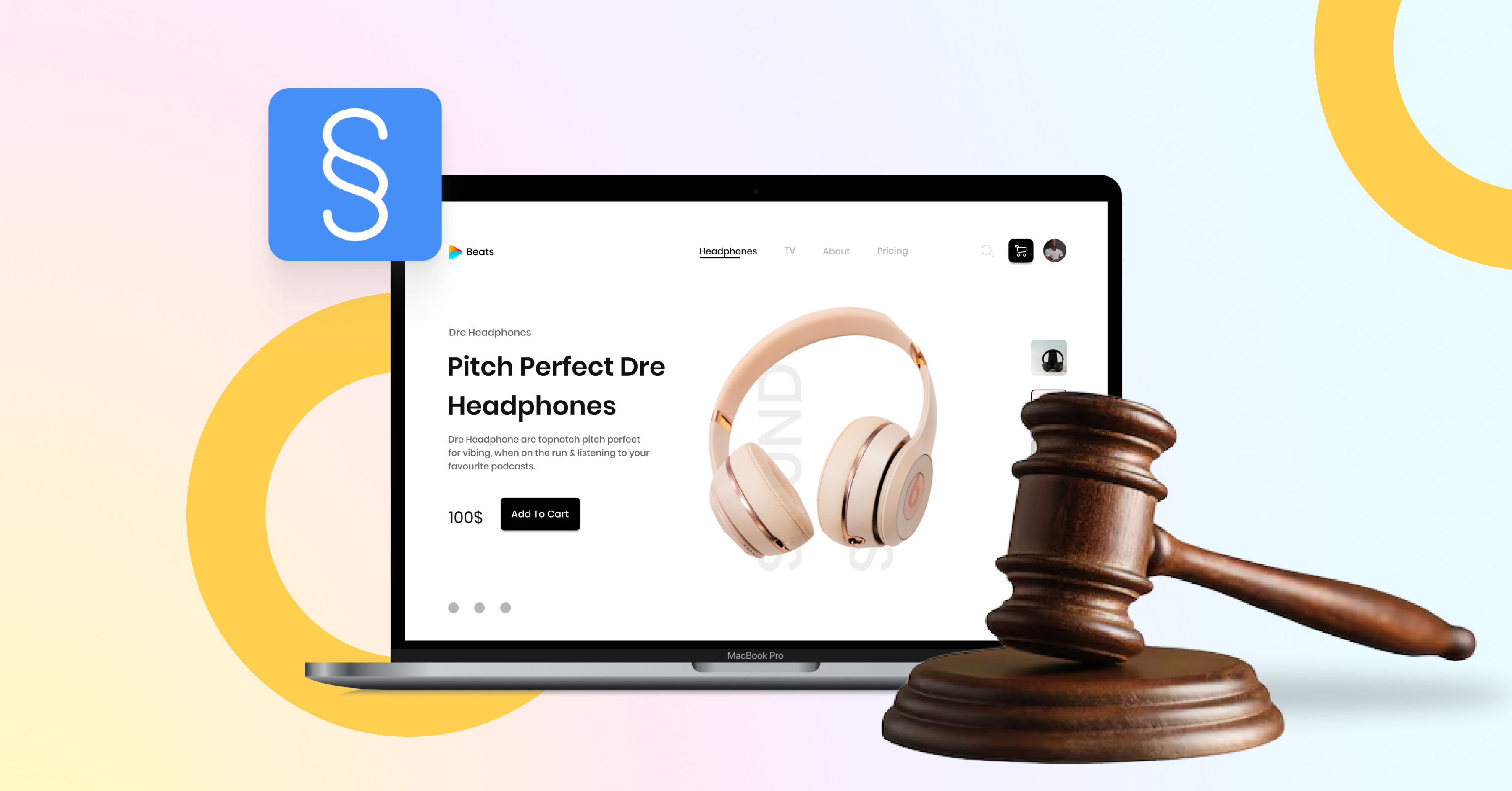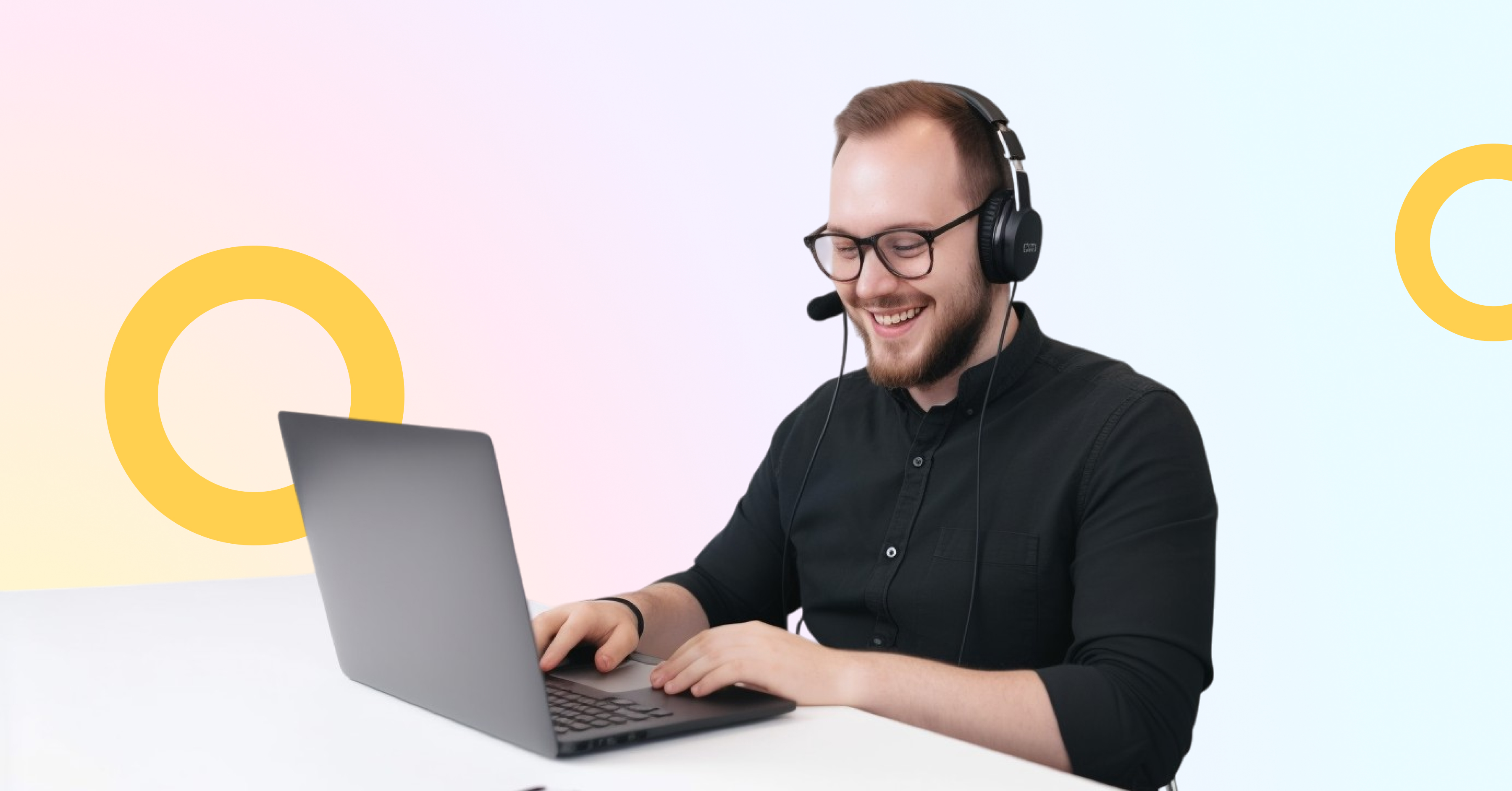Accessibility statement explained in simple terms: content, obligations, examples
Almost there! You are already working on the accessibility of your website and now there is one important step left – providing the accessibility statement for legal protection. We will show you what you need to consider when creating it and what a sample might look like.
What is an accessibility statement?
The accessibility statement, also known as "accessibility information," is a publicly available statement that describes how accessible a digital offering is, thereby creating transparency about the current state of accessibility. It is a document that is published on your website, preferably as a subpage.
Significance for digital accessibility
The accessibility statement plays an important role in digital participation. On the one hand, it ensures compliance with legal obligations in the area of accessibility. On the other hand, it makes a significant contribution to promoting equal participation in the digital space, for example when people with visual impairments can easily adjust settings to improve their perception.
Find outin this blog post how important accessible websites are for people with disabilities .

Who is required to make a declaration?
In principle, all companies and individuals are required to provide an accessibility statement if they are required to have an accessible website under the German Disability Equality Act (BGG) or the Accessibility Enhancement Act (BFSG). A declaration of accessibility has been mandatory for public sector institutions since 2020. Since June 2025, the implementation of the BFSG now also requires many companies in the private sector to have an accessible website and thus a declaration of accessibility.
Public bodies and authorities
Public institutions and authorities in Germany are required to provide an accessibility statement on their website.
This applies to:
● German authorities at federal, state, and local level
● Public bodies and various institutions and foundations
● Courts, universities, schools, social security institutions, etc.
A separate accessibility statement must be provided for each individual website and app.
The current status in terms of accessibility is important here; for example, you can indicate which problems will be fixed in the future.
Private companies – when does the obligation apply?
Since June 28, 2025, the obligation to provide an accessibility statement also applies to many private companies. In contrast to the public sector, where each digital offering requires its own statement, only one statement is required here.
According to Section 1 (3) BFSG, companies from the following sectors are affected:
● Online retail (online shops)
● Financial service providers
● Telecommunications providers
● Transport
● Media and streaming services
● Software and hardware providers
● Service portals with customer interaction
Micro-enterprises that offer services and have fewer than 10 employees and a maximum turnover of €2 million are exempt from this obligation.
Of course, you can also strive to make your website accessible without any legal obligation. By doing so, you will contribute to the social participation of people with disabilities online and expand your potential target group - a real win-win situation!
Legal context and guidelines
The obligation to provide an accessibility statement is based on various legal requirements.
The BGG applies to public institutions, while the BFSG regulates the conduct of private companies.
BITV and EU Directive (EU 2016/2102)
Relevant laws and regulations at EU level include EU Directive 2016/2102, which applies to websites and mobile applications relating to public bodies. This directive establishes the obligation to provide accessibility statements and has been in force for websites since 2018 and for apps since 2021.
At the national level in Germany, the Disability Equality Act (BGG) plays an important role. According to Section 12a BGG, public bodies are obliged to design information technology services in an accessible manner. The Barrier-Free Information Technology Ordinance (BITV 2.0) regulates the content, structure, and publication of accessibility statements, in particular in Section 7 BITV.
Overview of the Accessibility Enhancement Act (BFSG)
The BFSG was enacted to ensure the implementation of EU Directive 2019/882 (European Accessibility Act, EAA) within the private sector in Germany.
Accordingly, the Accessibility Enhancement Act extends the obligation to certain products or services and thus serves to improve accessibility in the private sector.
Further information can be found in our blog post on the BFSG 2025.
What must be included in an accessibility statement?
Here you will find a checklist of all the important points that should be included in the accessibility statement according to the BITV/EU Directive:
● Degree of accessibility
● Date of last review
● Method of testing (self-assessment, assessment by an agency, etc.)
● Option for easy contact and reporting of barriers, including the name of a contact person in your company
● Reference to the enforcement procedure (e.g., BGG arbitration board) if no solution can be found
The following also applies to companies in the public sector:
● Status of compliance with accessibility requirements (compliant/partially compliant)
● If applicable: justification for exceptions and a description of the content affected
Exceptions and justifications
Attention, this is where it gets tricky: Public companies are required to disclose which content on their website is not (yet) accessible, such as older documents or videos without subtitles. In addition, they should provide a reason why this is the case, for example, if implementation is "unreasonable" for technical or financial reasons. Furthermore, some content, for example from external areas or archives, may not fall within the scope of the directive and therefore constitute an exception. It is also advisable to provide information about accessible alternatives.
Optionally, a reference to planned improvements in the future can also be provided, which can have a very positive effect when the website is reviewed, as it demonstrates commitment and willingness to implement.

However, this obligation does not apply to private sector companies, as they are generally required to have a completely accessible website.
On the contrary, you could even make yourself vulnerable to warnings, for example from competitors or consumer organizations. This would publicly demonstrate that you are intentionally violating the law.
Note: If you are unsure, it is best to seek legal advice and obtain legal protection, as the legal situation is still unclear in some areas.
Where should the accessibility statement be placed on the website?
The next question is where on the website is the best place to publish the statement.
Recommended placement according to BITV and EU directive
There are requirements for the visibility and accessibility of the accessibility statement on the respective website, which must be implemented. It is most important that users can easily find the accessibility statement, i.e., that it is clearly visible or linked and accessible with just a few clicks. For websites, it should be found on the home page and from every subpage, and for mobile applications, it should be found in the respective download area. It is recommended that it be placed in the terms and conditions, in the footer of each subpage, or in the main menu as an extra item, for example, labeled "Accessibility." A link under the "Service" section is also possible.
Furthermore, the statement should be permanently available and named in such a way that it is clear what readers can expect, for example, "Accessibility Statement" or "Accessibility Information." The statement must also be accessible without barriers.
Technical implementation with Eye-Able
Already using Eye-Able? Then you can simply use the "Accessibility Statement" menu item in the report dashboard to automatically generate an accessibility statement based on the available data with minimal effort.
How often must the accessibility statement be updated?
It is important that the statement is up to date in order to be legally compliant and enable digital participation.
Annual update recommended
Companies should review their accessibility statement at least once a year. Technical changes, further developments, and the fact that website operators replace old settings with new accessible options require an update.
The corresponding test date and the method used to perform the test, for example by an agency or through self-assessment, should also be kept up to date.
Difference between public and private entities
Companies
Public bodies are required to update the statement regularly in accordance with BITV 2.0 and EU Directive 2016/2102. The monitoring bodies of the federal states carry out checks and issue warnings accordingly.
For private companies, there is currently (as of July 2025) no specific annual update requirement. However, regular updates to the accessibility statement are expected, especially when changes are made to the website. Companies are required to provide information that is both reliable and easy to verify.
Samples and templates for accessibility statements
You can find numerous samples of accessibility statements online that can be used as templates for a legally compliant accessibility statement. However, such samples should only serve as a guide; it is recommended that you adapt the company description and implementation of accessibility to your specific needs.
Appendix 3 of the BFSG can be used as a very useful aid for creating a declaration.
Sample texts and wording
The following wording can be used as a guide:
● Our service can be described as follows: ... In order to provide the service, it is necessary that ...
● The contact person for accessibility is ... Please contact us if you have any questions or encounter any barriers. We will find a solution for you as quickly as possible.
● The service offered meets the accessibility requirements in that ...
● The applicable market surveillance method is ...
● The website was last checked on ...
● The competent arbitration body is ...
The following wording is important for public sector companies:
● Parts of the website that are not yet accessible concern: ...
● The reasons for this are ...
Generators for creating an accessibility statement
There are now several generators available online that can help you write your accessibility statement.
Online tools and accessibility statement generators
These are digitally available tools for creating accessibility statements. They usually include a questionnaire about the company or service and have standard texts. One example is the BITV Test Generator for the public sector.
In addition, there is the Eye-Able accessibility statement generator. The most important features are listed here:
- Your accessibility statement is generated directly from the test results, which is a key difference from other tools.
- Edited texts are delivered with reference to the latest legal requirements for the respective country.
- The report provides a comprehensive overview of the website's current barriers and specific common problem areas, and divides the issues directly into error categories. These findings are automatically transferred to the accessibility statement.
- The generator combines your information about your company or institution with the technical results and creates a document that you can download, publish, or further customize.
- The generator clearly distinguishes between private and government websites.
- Government agencies that sell commercial products are also taken into account.
- The market surveillance authority is specified as required by the BFSG.
- There are automatic pre-entries, including references to the AGID guidelines, for even faster creation of the statement.
- All text modules have been completely revised in close consultation with SPIRIT Legal, a Leipzig-based law firm, to ensure maximum security and comprehensibility.
Here you can use solutions such as the accessibility statement generator from Eye-Able, which enables simple and legally compliant creation.
Try Eye-Able now for 14 days with no obligation!
What to keep in mind when using the tool
It is important to supplement and check the results manually and, if necessary, consult with your company's legal department. The technical requirements must comply with the legal requirements.

Practical examples
Here are some illustrative examples for a better understanding:
Example of a public website
An interesting example is the municipal administration of Germersheim: https://www.germersheim.eu/. The independent town uses Eye-Able for its website. The accessibility statement can be found in the footer of the page under "Info," and there is also a sub-item "Report barrier."
Example of an SME with a simple statement
An example of an SME (small and medium-sized enterprise) would be Toto-Lotto Niedersachsen GmbH: https://www.lotto-niedersachsen.de/. The statement can be found in the footer under "Accessibility."
Common mistakes in accessibility statements
We show you the top 3 most common errors that can creep into accessibility statements:
There is no declaration, or the declaration or the test date are incorrect or out of date. This can lead to warnings and fines (up to $100,000), and in the worst case, even to a ban on operation.
The accessibility statement is very difficult to find. If, for example, the statement is only available on individual subpages, this is considered a violation.
No contact details: It is absolutely essential that there is a way to contact your company, preferably at the beginning of the statement.
For companies in the public sector, it would also be a big mistake not to provide reasons for any exceptions to accessibility.
Conclusion: Why a good accessibility statement builds trust
A good and complete accessibility statement kills two birds with one stone: it implements legal requirements and strengthens digital participation for many people. This can increase trust in your website content.
With solutions such as Eye-Able, legal requirements can be implemented efficiently and easily
while improving the digital user experience. Feel free to contact us!
FAQs
1. Who has to create an accessibility statement?
All companies that are subject to accessibility requirements under the BFSG or BGG must provide an accessibility statement accordingly.
2. Can I create the accessibility statement manually myself?
Yes, you can. It is advisable to use the wording recommended by law and accessibility statement templates, but adapt them to your company's specific needs.
3. What happens if I do not provide an accessibility statement?
You may be subject to heavy fines. In the worst case, your license to operate your business may be revoked.
4. Does the statement need to be updated regularly?
Yes, the accessibility statement should be updated regularly, at least once a year. This is mandatory for companies in the public sector, but not yet for companies in the private sector (as of July 2025).
Create your accessibility statement automatically now – with the free trial from Eye-Able. The generator is included and ready to use right away.
)